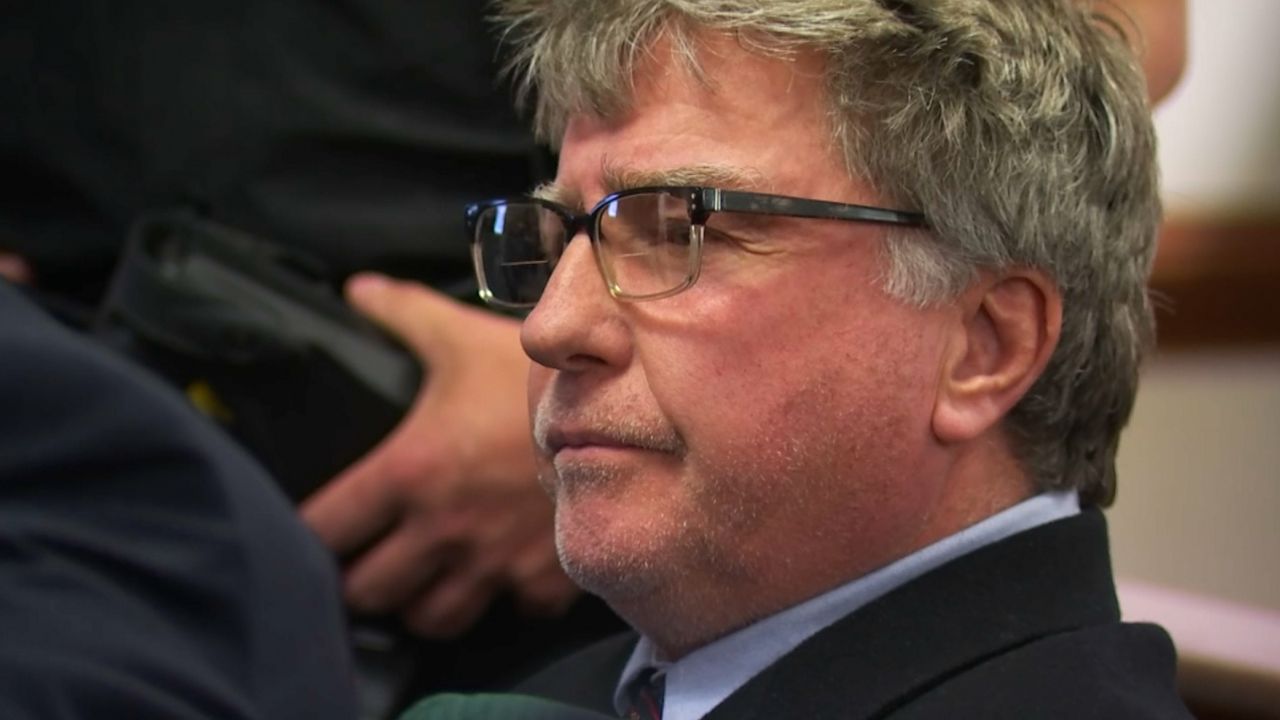The Washington County jury in the Kevin Monahan trial on Wednesday was shown photographs taken at Monahan’s home last spring after he allegedly shot and killed 20-year-old Kaylin Gillis, who police say was in a car that mistakenly pulled into his driveway.
A majority of the photos showed a 20-gauge pump-action shotgun that members of the state police’s Forensic Identification Unit (FIU) located resting next to Monahan’s bed. On a desk nearby were boxes of shotgun shells, eight bird shots, six slug rounds and one spent shell.
While on the stand, Kolby Gabler, the trooper who took the photos, described to the jury the mechanics of the shotgun and the search that commenced outside Monahan’s home where they expected to find spent shells. They did not, nor were they able to collect fingerprints from the gun.
Lead defense attorney Arthur Frost questioned Gabler about how leaving a fingerprint is a “chance encounter” and not always a guarantee.
In addition to second-degree murder and reckless endangerment, Monahan is charged with tampering with evidence after police say Gillis was shot and killed in his driveway after she and a group of friends got lost looking for a friend’s party.
The jury also learned more about the extent of Gillis’ injuries.
Dr. Micahel Sikirica, the medical examiner who performed an autopsy on Gillis, said three vertebrae in her neck were severely damaged and the spinal cord was severed, which would have made breathing nearly impossible.
Frost spent time showing jurors photographs taken inside the orange Ford Explorer Gillis was riding in, which showed alcohol and marijuana.
Police say Gillis and a group of friends got lost in Hebron on April 15, 2023, while looking for a friend’s party when the SUV she was riding in and two other vehicles, including a motorcycle, pulled into Monahan’s driveway.
Prosecutors say the group was there for less than three minutes before deciding it was time to leave.
Frost depicted what occurred as a “terrible accident” after Monahan got scared, “stumbled” on his deck after firing a warning shot. He says is the gun is “defective.”
Testimony at the end of the day, however, contradicted that defense.
Victoria O’Connor, a forensic scientist with FIU who specializes in firearms, examined the shotgun. Despite the gun firing once during a series of drop tests, O’Connor couldn’t call it defective because she couldn’t verify whether the safety mechanism was engaged during that particular four-foot drop.
The industry-set standard used in most investigations requires the mechanism to be engaged for this drop. The test was repeated with the safety engaged and the gun didn’t fire.
Testimony resumes Thursday morning.



